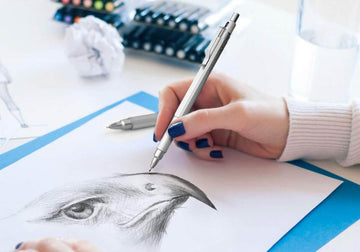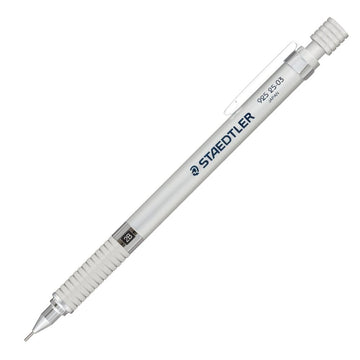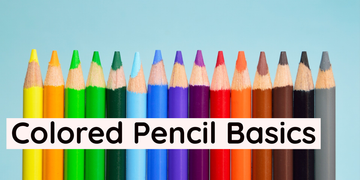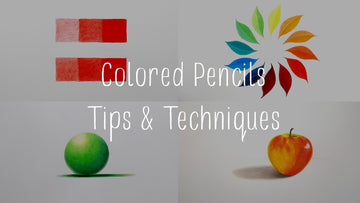
Mechanical pencils have revolutionized the world of art, offering artists a new level of precision and control over their creations. From shading and cross-hatching to sketching and blending, mechanical pencils prove to be an indispensable tool for art enthusiasts looking to go beyond the basics and explore new techniques. Here, we will delve into the various applications and suggest suitable mechanical pencil models and lead types.
Shading : One of the main advantages of mechanical pencils in art is the consistent line width they produce, allowing for seamless shading. With an even application of graphite, artists can achieve tonal gradations that make their drawings more lifelike and engaging. Selecting a mechanical pencil with a 0.5mm lead, like the Pentel Graphgear 1000, provides the control needed for fine shading. Experimenting with different leads, such as 2B and 4B, offers variable darkness and smoothness when blending .
Cross-hatching : Cross-hatching is a method of building depth and tonality through the overlapping of parallel lines. Mastering cross-hatching requires a pencil with a firm lead for clean, sharp lines that don't smear or blur. A drafting pencil, like the Staedtler Mars Micro 780, with 0.3mm or 0.5mm lead, ensures the necessary accuracy. For optimal results, use light pressure at the beginning, gradually increasing depth as needed.
Sketching : Mechanical pencils provide a level of comfort and convenience during the sketching process, alleviating the strain of continuously sharpening traditional pencils. For dynamic sketches, use a mechanical pencil with a larger diameter, like the Pentel P205 Mechanical Pencil, ensuring a natural feel while enabling expressive lines. Ideal for preliminary and finished sketches alike, the ability to use various lead hardness types further expands artistic expression.
Blending : Blending and smudging techniques unify lines and tones, enhancing the aesthetic appeal of art. However, graphite smearing can result in undesirable glossy and uneven surfaces. An effective method to minimize graphite smearing involves layering mechanical pencil applications, allowing for more extensive blending. Tortillons, tissue papers, and blending stumps help manipulate and smooth graphite evenly. In addition, Kneaded Erasers effectively pick up graphite without smearing or disturbing the drawing surface, enabling smooth blending of mechanical pencil techniques .
Selecting a Mechanical Pencil Model and Lead Types: The right mechanical pencil model and lead type impact the overall quality of a drawing. Consider the Pentel Graphgear 1000 (0.5mm - 0.9mm lead sizes) for comfortable handling, robust construction, and interchangeable grip sections. The Rotring 800 Pencil (0.35mm - 0.5mm lead sizes) provides a solid stainless-steel design, grip-adjustability, and a smooth eraser mechanism. The Pilot Automac Soft Drawing Pencil (0.5mm - 0.7mm) features soft leads suitable for sketching and blending.
Experimenting with different lead hardness levels is essential, as harder leads are well-suited for light sketches, and softer leads produce bold lines with darker tonality. Graphite 2B, 3B, and 4B leads offer an appropriate range of darkness for both sketching and shading, while 2H and H leads serve excellently for preliminary drawing stages .
Exploring mechanical pencil art opens up new ways to push the boundaries of creativity and skill. These versatile tools empower artists to bring their ideas and visions to life by offering control, precision, and unparalleled adaptability.



